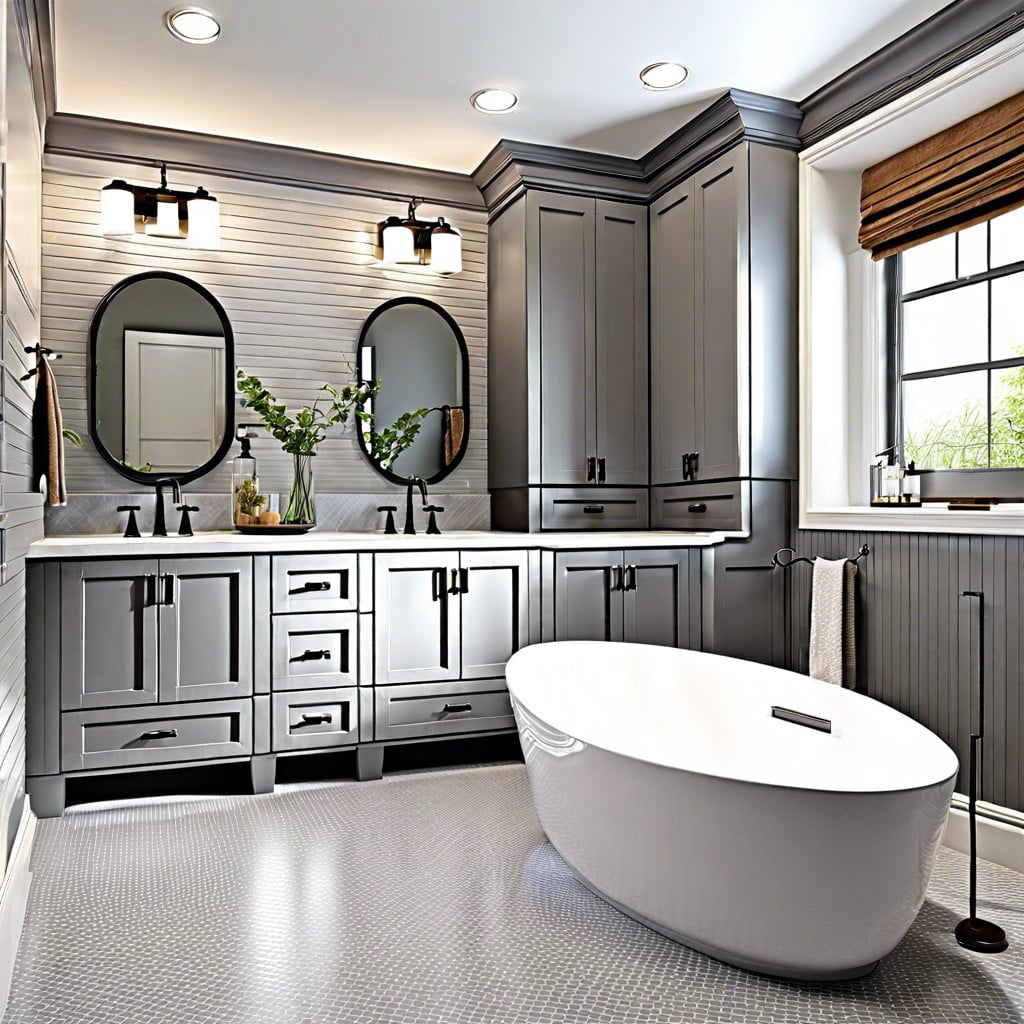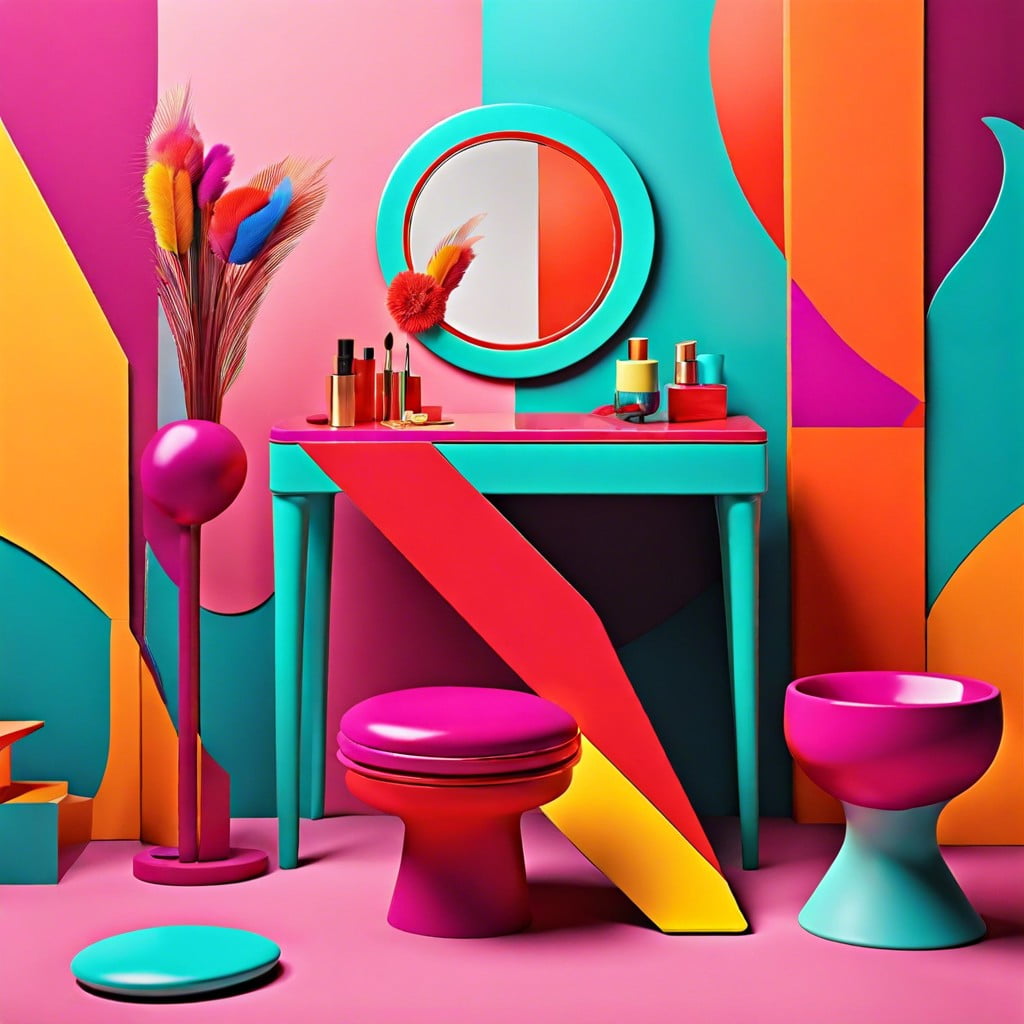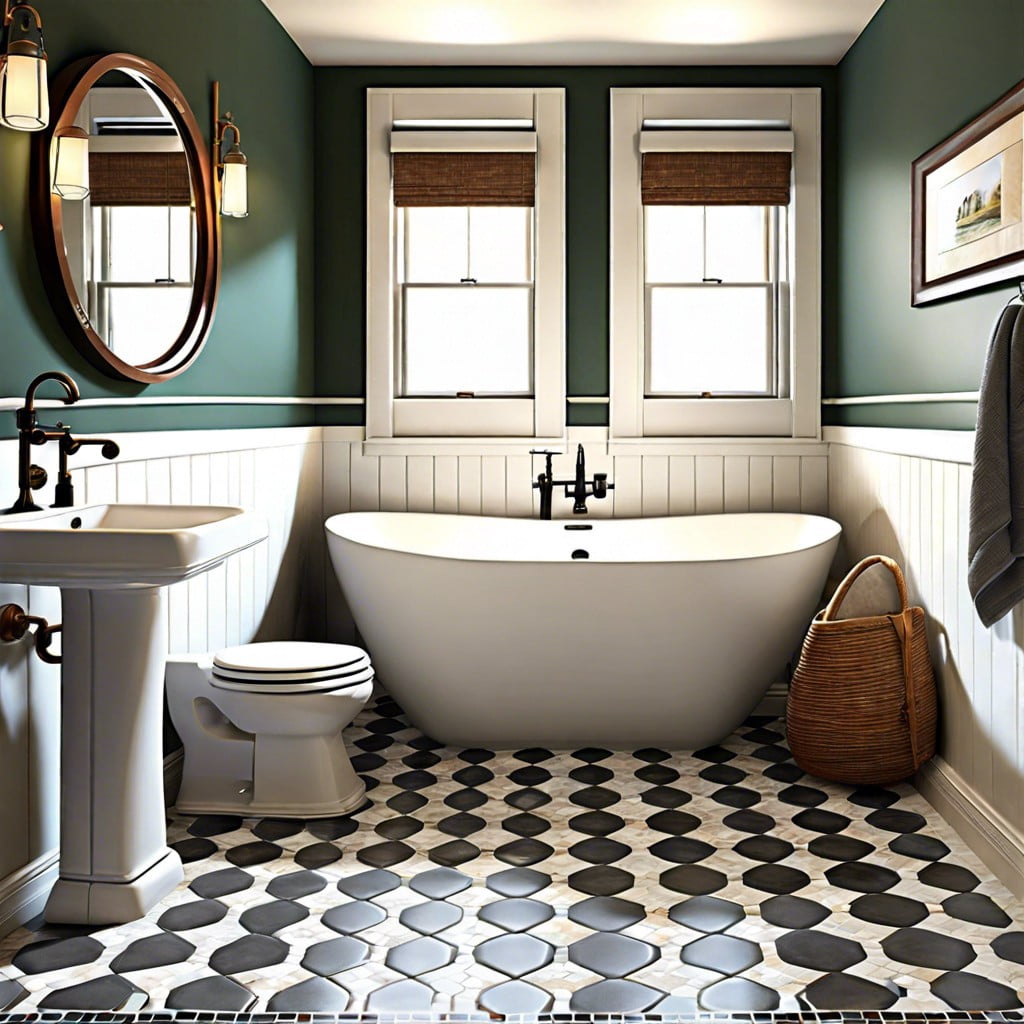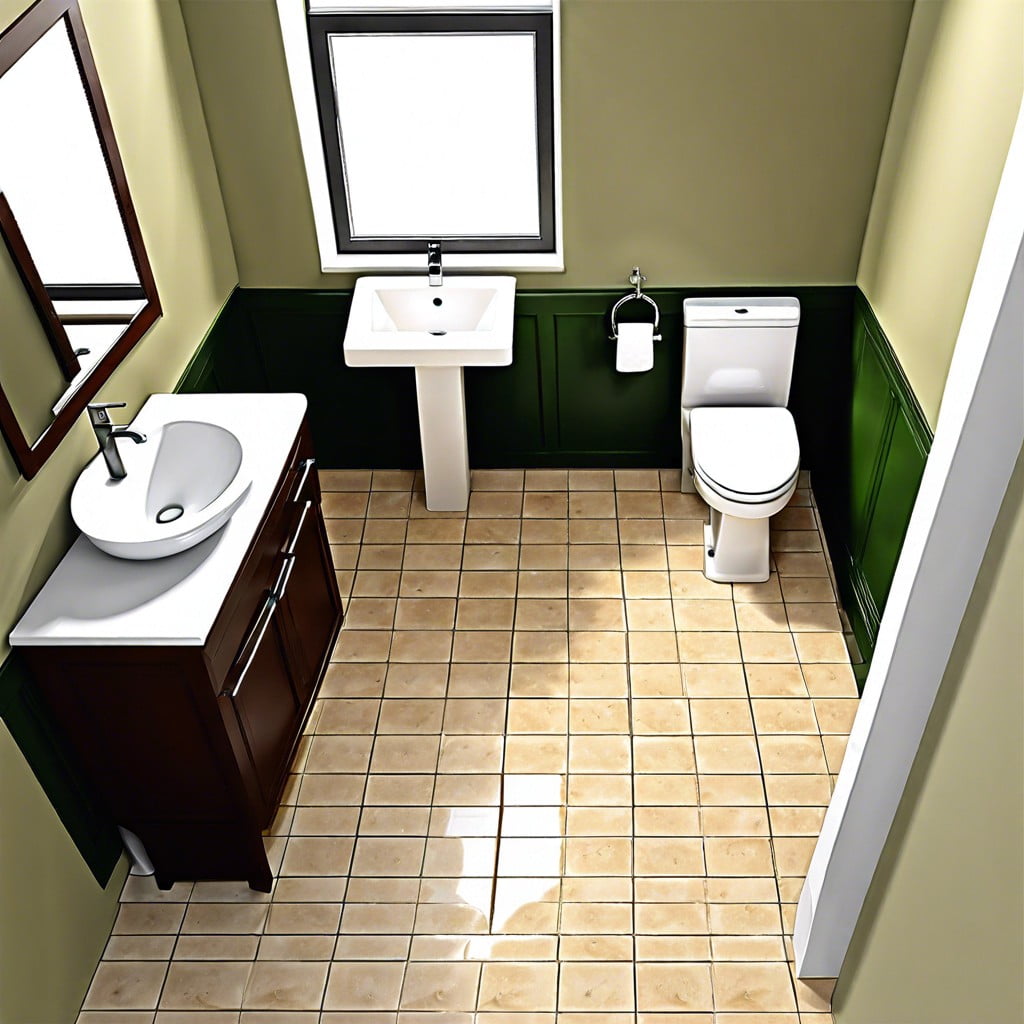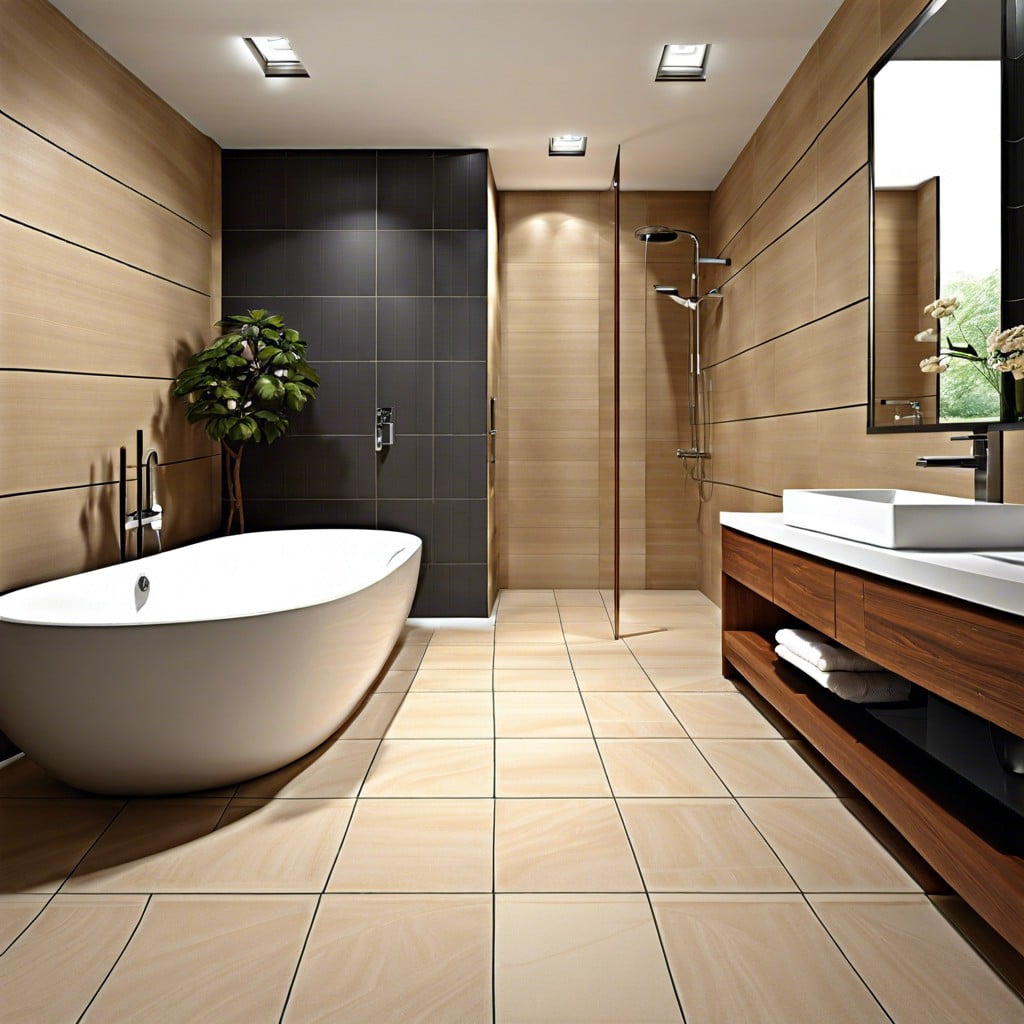Last updated on
Learn what a 3/4 bath includes and how it differs from other bathroom types to make informed decisions for your home design or renovation.
Key takeaways:
- Definition of a 3/4 bathroom: toilet, sink, and shower, no bathtub.
- 3/4 bath finds the middle ground between full and half baths.
- Impact of 3/4 bath on resale: convenience, functionality, and reduced cost.
- Essential fixtures of a 3/4 bath: toilet, sink, and shower.
- Cost estimate for adding a 3/4 bath: ,000 to ,000.
Definition of a 3/4 Bathroom
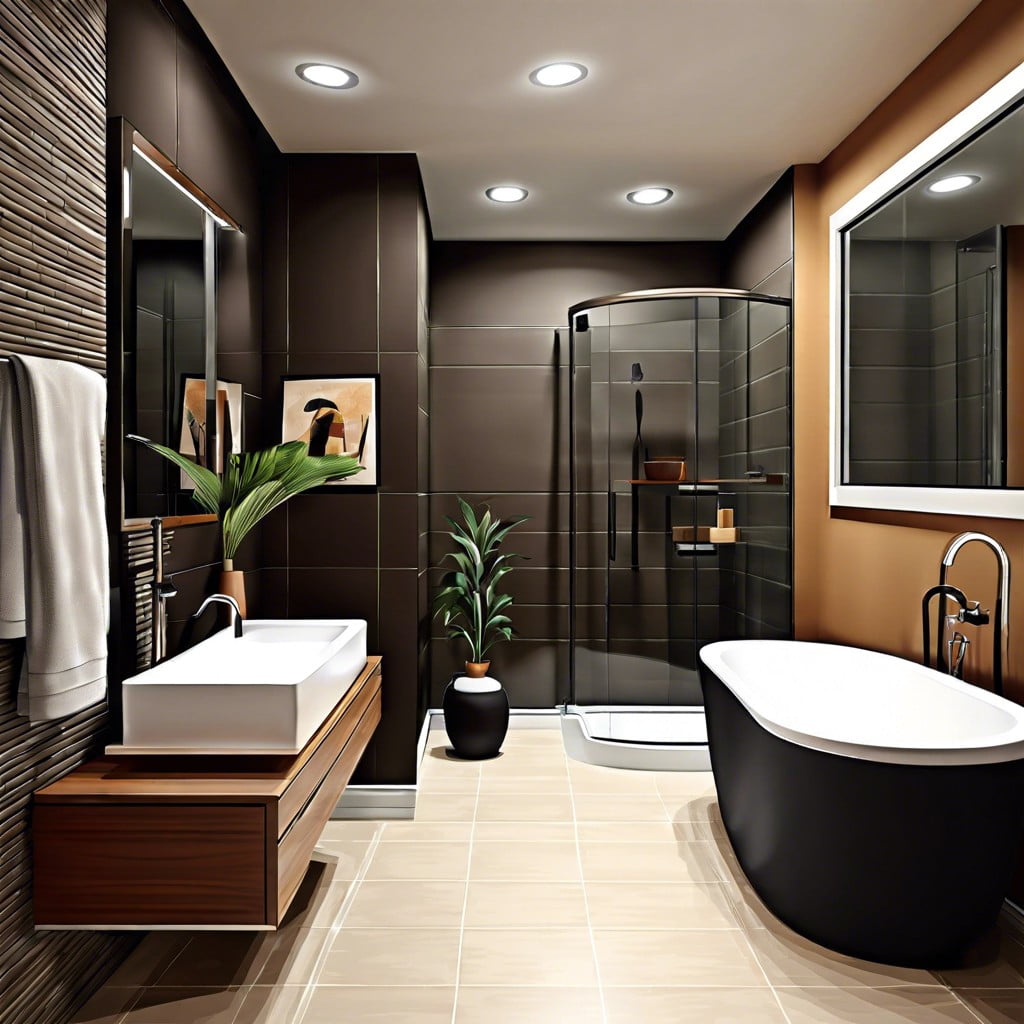
Understanding the term ‘3/4 bath’ hinges on recognizing the components of a full bathroom. Traditionally, a full bath includes four key elements: a toilet, sink, bathtub, and shower (sometimes the tub and shower are combined). By contrast, a 3/4 bath features a toilet, sink, and shower, but no bathtub.
This configuration appeals to those who prefer showers over baths, as it utilizes space more efficiently than a full bath. It’s an ideal compromise between the limited utility of a half bath, which omits both the tub and shower, and the more extensive full bath that requires more square footage.
The significance of a 3/4 bathroom is in its balance of functionality and space conservation. It satisfies the needs of most daily routines while being smaller and often easier to fit into home designs where space is a premium. Moreover, for those looking to add a bathroom to their home without the higher costs and space demands of a full bath, a 3/4 option is an effective solution.
Comparison With Full and Half Baths
Navigating the world of bathroom configurations can feel like deciphering a secret code. A full bath typically includes a toilet, sink, shower, and bathtub, ticking all the boxes for comfort and functionality. It’s the gold standard for many, doubling as a private spa retreat within the home. In smaller spaces, half baths serve a different purpose—focusing solely on the basic needs with just a toilet and sink, they are perfect for quick visits or guest use without the bells and whistles.
The 3/4 bath, however, finds the middle ground. By omitting the tub, it offers more than a half bath without crowding the space like a full bath might. It’s an exercise in efficiency: maximizing utility for daily routines while freeing up square footage. For city dwellers or those with smaller homes, this trade-off can make a significant impact on the livability of a space. It also adjusts expectations for potential buyers, who may appreciate the extra bathroom without the maintenance or cleaning demands of a full bath.
Yet, the true charm of a 3/4 bath lies in its versatility. It can adapt to sleek, modern aesthetic choices where a bathtub might feel outdated or can be outfitted with luxury fixtures for a high-end shower experience that rivals any full bath’s allure. It’s a relevant consideration in today’s housing market—a reflection of evolving lifestyles that prize efficiency and ease of use without sacrificing comfort.
Impact of Bathroom Types On Home Resale and Buyer Preference
Breaking down walls is one thing, but when it comes to breaking down buyer preferences and marketability, the presence of a 3/4 bath can be pivotal. Imagine a couple, searching for their perfect home, ticking off their list of must-haves. A full bath seems essential, but the addition of a 3/4 bath presents an attractive, functional allure that a mere half bath can’t compete with. Convenience meets efficiency: a home with multiple bathing options facilitates morning routines and accommodates guests without the spatial and financial commitment of multiple full baths.
Consider the urban dweller, where space commands a premium; the 3/4 bath stands as a testament to smart use of the limited square footage. It satisfies the desire for a shower without the spatial extravagance a tub would demand.
From a resale perspective, it’s all about numbers. Having more than one bathroom is a clear winner, but a house boasting a 3/4 bath can edge out competition by offering most of the utility of a full bath at a reduced cost and space requirement. It walks the fine line between necessity and luxury, carving out a niche in the real estate market that translates into a faster sale.
This modern-day must-have is more than a trend. It is a conscious decision by homeowners to align with contemporary needs, focusing on both practicality and appeal. As preferences evolve, so too does the definition of the ideal home, making a 3/4 bath a smart addition to any home strategy.
Essential Fixtures of a 3/4 Bath: Toilet, Sink, and Shower
A 3/4 bathroom is streamlined yet fully functional, comprising only the essentials. The toilet is non-negotiable; it’s the cornerstone of any bathroom setup. Similarly, the sink is an indispensable feature, vital for daily hygiene routines. When selecting these fundamental amenities, consider space-saving designs like pedestal sinks or wall-mounted toilets to maximize the area’s utility.
Next comes the shower, which distinguishes a 3/4 bath from a half bath. A standalone shower saves space compared to a full-sized bathtub and appeals to those with hectic lifestyles demanding quick, efficient routines. Glass enclosures can create a sense of openness, while tiled surrounds cater to both aesthetic and practical needs.
Together, these three components must harmonize within the space—each functional, accessible, and cohesive in design. Strategic layout planning enhances the room’s flow, ensuring the 3/4 bathroom is not only serviceable but also a pleasing addition to the home. Choose fixtures with a consistent style and finish to maintain a unified look and feel, elevating the space beyond its modest dimensions.
Cost Estimate for Adding a 3/4 Bath to a Home
Estimating the cost of adding a 3/4 bathroom to a home relies heavily on several variables, from the raw materials required to the finishes chosen. Generally, for a basic addition, homeowners might expect somewhere in the ballpark of $10,000 to $15,000. This range includes both labor and materials but adheres to modest fixture selections and finishes.
The cost can quickly escalate with high-end materials or custom features. Luxury fixtures, tiles, or additional amenities such as heated floors could double the price or more. Complexity of installation also plays a role; integrating new plumbing into existing systems can be costly, especially in older homes where updates to the plumbing may be required to meet current code standards.
Additionally, geographical location impacts labor costs. Metropolitan areas tend to have a higher rate for skilled labor compared to rural regions. It’s imperative for homeowners to get multiple quotes and budget for unforeseen expenses – a common occurrence in renovations. A contingency of at least 10-15% of the total estimate should be considered prudent.
Lastly, while DIY can cut costs, it’s essential to recognize the value of professional work, especially for intricate tasks such as plumbing and electrical work, which, if done incorrectly, can lead to costly mistakes down the line.
Recap
